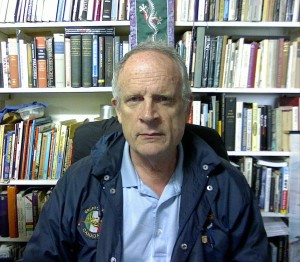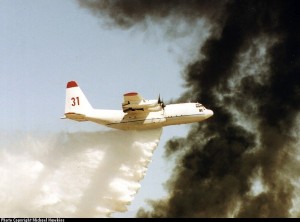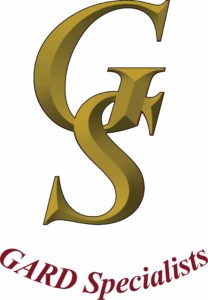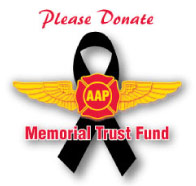AS I SEE IT: Coulson Aviation’s Tanker 131
Tony Morris = TM
Wayne Coulson = WC
TM: Please describe Coulson Aviation’s U.S.F.S. ,Fire and Aviation Management contract. For how many years is the contract?
WC: Coulson Aviation USA was a successful bidder and determined to be the best value to the government for a 5 year contract with 5 one year renewals for a total of 10 years.
TM: What is the approximate cost to purchase a C-130Q?
WC: To purchase a low time airframe, carry out the necessary depot level inspections required, and modify it to an airtanker role with the Coulson RADS-XL Constant Flow tanking system will cost in the ballpark of $16,000,000.
TM: Approximately how many C-130Qs would you estimate are available for use as firefighting aircraft worldwide?
WC: The C-130Q was part of an elite program called TACAMO, there were 18 C-130’s commissioned for this role and there are still some available around the world. The Coulson C-130 Type Certificate is also applicable to C-130H model airframes.
TM: Describe the tank system of Tanker 131. How many gallons does it carry?
WC: Tanker 131 is operating a traditional ad proven Gravity Constant Flow Tank based on the original RADS I C-130A tank that Aero Union built. Coulson Aviation USA purchased the STC from Aero Union, re-designed it and built it from scratch. During that process the volume was increased from 3,000 USG to 3,500 USG and the tank was branded the Coulson RADS –XL.
TM: Can the RADS I tank be cleaned rapidly if there is a change from Long Term Retardant to Gel? How is this accomplished?
WC: During the tank re-design we incorporated an automatic tank rinse system. At the end of the day, or if the customer would like to switch chemicals, you can plug water into the airplane and each bay of the tank has a spinning high pressure nozzle that will rinse the tank.
TM: Is Tanker 131 NVG equipped ?
WC: At this point Tanker 131 is not NVG Certified, however plans are in place to modify the cockpit over the winter months.
TM: Does Tanker 131 use a GPS system? How is it used ?
WC: Tanker 131 is using a GPS system for navigation as well as feeding the tank control system to vary the flow rate based on ground speed.
TM: What are the advantages of the RADS-XL tank system?
WC: The RADS-XL is a proven design with a history of hitting very heavy flow rates. Coupling this to the C-130 which is a proven platform and designed for a tactical mission profile makes Tanker 131 the most capable aircraft in the fleet today.
TM: What is the normal drop speed for Tanker 131?
WC: The desired drop speed is 125 to 130 kts.
TM: At what height AGL are the contents of the tank normally dropped?
WC: The desired drop height is approximately 200 ft.
TM: Will the Coulson S-76 helicopter be used to video the performance of Tanker 131?
WC: We are currently working with the U.S.F.S on getting Firewatch 76 down to California this year to evaluate Tanker 131 in some real fire situations and carry out real time drop evaluations.
AF C-130J MAFFS —- Coulson Tanker 131(C-130Q RADS-XL):
AFC130J Tanker 131
EOW 90,000lbs 75,000lbs
Engine AE2100D3 T56A-15
SHP 4,700lbs EA 4,200lbs EA
MAFFS2 15,000lbs RADS-XL: Included in OW
RDS cost: $7M (est) $3M (reported)
Flow Rate: 700gps 1600gps
Retardant 27,000lbs (3000 gallons) 31,500lbs (3,444 gallons)
Fuel 24,000lbs 24,000lbs
GW 156,000 130,500lbs
P/Weight 0.12 0.13














Good interview Tony. It would be interesting to see how the new next generation tankers line up against each other performance wise as they get approved.
The next thing to see whether there will ever be a change in USFS policy to use anything else but long term retardants in these machines. More and more of these Federally contracted aircraft are being called upon to assist in the wildland urban interface and direct attack roles really have a place in early control of a wildfire.
Coulson press release:
https://docs.google.com/file/d/0B8Yh0_JsSs8aejkzVjFsVVpEelE/edit
The rest of the story—-
I think new is a relative term here. This (T131, C130Q) airplane is 33 years old and just spent 11 years in a museum. It’s reported the tank is from a retired C-130A though a proven Aero Union system. In contrast when the S-2A’s were introduced they were 17 years old and had total flight time less than 5000 hours. When the B-17 was introduced in 1960 most the aircraft were 16 years old and had very low airframe times. When operational in year 2000 S2Ts (proven generation) were of comparable age with this aircraft except for the fact that their total times were 70% less. No doubt the C-130 is an excellent air tanker and will be an great asset to the fleet but it shouldn’t ease the quest for the us to acquire the next generation of air tankers.
The paint job is really cool…were moving on.
Respectfully,
Chuck Lees